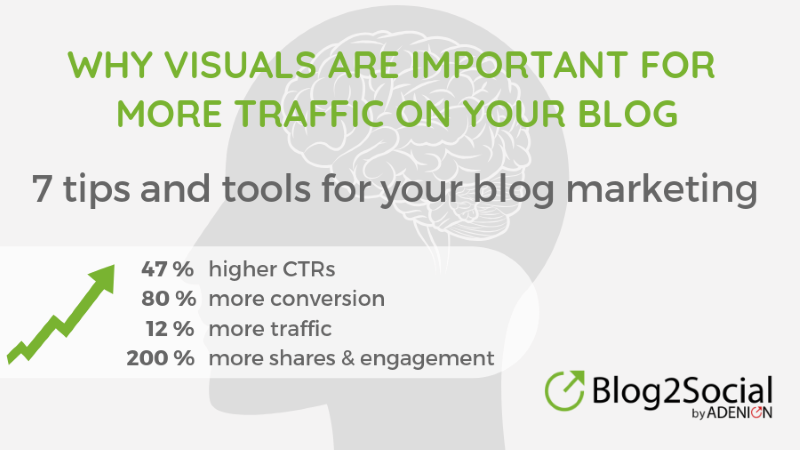Formatting your blog post goes beyond just creating a visually appealing design. As AI-driven search engines increasingly influence how users find content, blog formatting must cater not only to human readers and traditional search engines, but also to large language models (LLMs). These AI tools process text differently, making structured, clear, and semantically rich formatting crucial for effective AI SEO.
I have put together a comprehensive guide to show you how to create blog posts that are reader-friendly, perform well in traditional search, and are also optimized for AI-driven discovery.
First, though, let’s take a close look at what blog formatting is, and why it matters for business owners and bloggers.
What is Blog Formatting? Why It Matters

Blog formatting is the process by which you create breaks and structure for your blog posts. Different types of blog posts warrant different types of formatting, but the basic idea remains the same: blog content requires structure and a layout that is easy to read and understand. Most blogs follow the same basic format, including headings, small and easy to digest paragraphs, and an eye on readability.
Blog formatting is an integral part of your overall content management. The content of your work matters, certainly, but the way in which it is presented is also important. Readers are looking for value and an easy-to-digest format. LLMs are looking for readability and cohesion. By focusing on both traditional SEO needs and LLMs, you are effectively covering your bases and making sure that your work is reaching as large an audience as possible.
Understanding Blog Formatting

Blog formatting will depend on the type of blog post being developed, but will likely contain each of the following: headings, readability scores, and an easy-to-follow structure. Headings, separated by 2, 3, 4, and so forth, help both the structure and readability of your blog, and help with search engine optimization efforts. Headings are used to identify what the following paragraphs are about, and can further help subcategorize your content.
The Importance of Blog Formatting for Traditional SEO
Blog formatting is essential for search engine rankings, because it helps organize your target keywords, provides a table of contents, of sorts, for both search engines and readers to navigate your blog posts, and helps condense complex ideas into more digestible bite-sized pieces.
By improving readability and user experience, your blog posts can rank far higher in organic search results, and ultimately reach more people. Blog post formats do not typically deviate from using headings and focusing on smaller and more readily understood concepts, to make sure that readers are able to grasp key takeaways.
Further Reading: 11 Best Practices to Create the Perfect Blog Post Format
The Role of LLMs in AI SEO
Large Language Models (LLMs) are useful for AI SEO, because they both generate and analyze content in a way that encourages natural language use and keyword usage. LLMs comb through content that has already been created, and determine whether blog post formats and content actually use language in a way that seems organic, well-organized, and cohesive. When LLMs are used to generate content, they can help create a well-formatted blog post that seamlessly integrates keywords.
AI relies on a series of dogmas, and when those dogmas are not followed, AI neither recognizes nor promotes blogs. Structured and semantically rich content is essential for AI SEO, because AI SEO is trained to promote content that seems to have been written by people, for people. When you throw something together just to have a clickable link, or try to create large amounts of posts for your content marketing efforts, AI can recognize poor formatting and unnatural or stunted language, and will flag it negatively for SEO purposes.
Key Blog Formatting Techniques for SEO and AI

Learning how to develop blog formats that support strong SEO scores can greatly improve your blog articles, and can help you generate general blog post templates to follow. To develop key blog formatting techniques to consistently generate successful blogs, I suggest focusing on structure, enrichment, visuals and lists, and metadata and anchors. By writing blog posts that hone in on each of these measurements, you can ensure that your blog post ideas will appeal to your audience and AI SEO algorithms, alike.
Structuring Content for Readability
As you develop your blog post templates, make sure you structure in a logical hierarchy. Use clear headings that follow tangents or delve further. This means starting with an H1 for your title, using H2 to form your main topic or argument, and using H3 and H4 to further discuss specifics. Dividing your entire blog post this way makes it far easier to read, and can help disperse relevant keywords evenly throughout the post.
As you write your blog from scratch, also focus on creating content that is easily skimmed. Short paragraphs and bullet points help eyes focus easily on different thoughts and ideas, and help maintain attention. They also perform better on mobile; given that mobile use is so common, it is safe to assume that at least part of your audience will be consuming content via a mobile device.
Further Reading: Here’s How to Structure a Blog Post for Both Readers and Search Engines
Semantic Enrichment for AI Optimization
Whether you are creating list posts or more text-heavy pieces, make sure that you use synonyms, related terms, and contextually rich language in your posts. By making sure that your content is focusing well on your subject and you are using organic, relevant language, you will score higher in SEO, and you will present yourself as an authority in your field.
Schema markup is the term used to describe additional information added to your posts and pages, to help your work show up more effectively in searches, and to more closely answer specific questions. Let’s say, for instance, that you fill your blog post with relevant links, you offer actionable steps, you establish yourself as an authority, and you use clear, concise formatting. These are great steps, but if you do not include an image, an author, a general idea of the topic being discussed, and even the date, you may be less likely to show up in organic search. You may also be less likely to entice new readers to click on your posts.
Schema markup helps search engines more thoroughly understand your posts.
Further Reading: The EASY Way How to Write a KILLER Blog Post in 19 Steps
Leveraging Lists, Tables, and Visuals

Lists, tables, and visuals are all great tools to improve the appearance, function, and visibility of your posts. Each of these formatting tools can be used in the following ways:
Trying to Keep Up with Digital Marketing?
Just released: my new book to help small businesses, entrepreneurs, and marketers master digital marketing in today’s digital-first world.
Drawing on my Fractional CMO experience, Digital Threads simplifies complex strategies into clear, actionable steps for success.
Transform your business today—grab your copy! Click the cover or button below to buy on Amazon.
- Tables can represent visual data easily. If you are discussing numbers or figures, including a table provides a way to break up text and present information in a compelling and visually interesting way.
- Numbered and bulleted lists are great to denote clear information hierarchy. By including numbered and bulleted points in list posts and other formats, you once again break up text and create an easily digested format through which to take in information.
- Relevant images help capture interest. By using relevant images with descriptive alt text (that also uses relevant keywords), you are helping your audience develop a greater understanding of your post while improving your SEO scores.
By using these visual elements–even via a standard stock image–you are improving your writing process and your user experience.
Optimizing Metadata and Anchors
Metadata and anchors can help provide a concise introduction to your posts and your brand or company as a whole. These tools are designed to help streamline your subject matter and appeal to both search engines and readers. During the editing process, ensure that your meta titles and descriptions are SEO friendly. Although high-quality content is vital, knowing how to describe and title that content is essential; titles and descriptions should both contain your target keywords and any other targets, such as location.
Concise and descriptive anchor text is also essential for your internal links. By ensuring that your anchor text accurately and clearly describes your links, you make it easier for search engines to understand your pages and, consequently, your site overall.
Further Reading: 10 Top Tips to Increase Your Blog Post SEO
LLM-Friendly Formatting Best Practices
I discussed how to develop a writing style that LLMs favor, but I want to go into greater detail to make sure that your blog ideas are being seen and recognized by LLMs. Remember that an LLM-friendly format may focus on either developing content in a certain format, or reading content in a particular way. For the purposes of learning how to format blogs, focus on how LLMs are reading your content. Consider the following ideas:
Use Plain Language for Clarity
Jargon and overly complex sentences read as confusing and difficult by both human readers and LLMs. By simplifying complex topics and using varied sentences that are not too complex, you improve reader experience and LLM recognition. If you are uncertain, consider the way that conversations naturally flow. Mimic that rhythm.
It can be tempting to put a high premium on creativity when creating content, but valuable content typically prioritizes clarity over creativity. From your blog post title to your paragraphs, make your points clear and your language concise.
Annotate Key Sections for AI Readability
No matter the content types you are developing, remember that structured data is preferred. Utilize FAQ schema, how-to schema, and other easy-to-read formats on your blog platform to position yourself as a leader in your industry. Remember the rule of thumb that if you understand a subject well, you should be able to explain it to a child.
Consistency in Structure and Tone
Blog titles and blog topics alike should be consistent in structure and tone. While larger writing teams may not always sound exactly the same, make sure that your blogs maintain a general structure and tone that can be carried across different writers and subjects. If you are focused on generating posts that prioritize formality, for instance, you cannot suddenly lapse into a highly conversational tone. If you are friendly and forward, suddenly sounding educational may be jarring for your audience.
Predictable formatting is also essential for LLM processing. Again, because the goal is to sound natural, as though your blogging platforms are actually written by people, consistent formatting is important.
Further Reading: 13 Definitive Blog Post Templates to Inspire Your Blogging
Common Blog Format Mistakes to Avoid

While plenty of SEO recommendations focus on how to keep your primary keyword top of mind, it is also important to avoid common mistakes. Common mistakes include keyword stuffing, neglecting the basics, and ignoring accessibility features. By avoiding these mistakes, you can make sure that your content is being seen and promoted on a regular basis.
Overloading with Keywords
Keyword stuffing negatively impacts readability and AI interpretation. It can be tempting to toss as many keywords as possible into your pieces of content, but doing this can make your posts sound stilted and awkward. By using keywords naturally, you improve reader experience and recommend your work to search engines.
Neglecting Semantic Context
Naturally integrated keywords and related terms can help support captivating introductions and compelling topic sentences. By integrating your keywords naturally, your content sounds more natural and engaging. Using related terms helps avoid keyword stuffing, while naturally incorporating similar or related ideas.
Ignoring Accessibility Features
Alt text, descriptive links, and accessible design are all important, as they help everyone navigate your blog posts and site. Alt text and descriptive links can be used to help people and search engines navigate your site, while accessible design helps make your site easily understandable and readily moved through.
Conclusion: Aligning Blog Formatting with Future SEO Needs
Formatting your blog post effectively is no longer just about creating visually appealing designs for human readers. As AI-driven search engines become increasingly dominant, adapting your content for both traditional SEO and LLMs is essential. By following the strategies outlined in this guide, you can create blog posts that engage readers, rank well in search engines, and are seamlessly interpreted by AI models. Embrace these techniques now to stay ahead in the evolving digital landscape.










